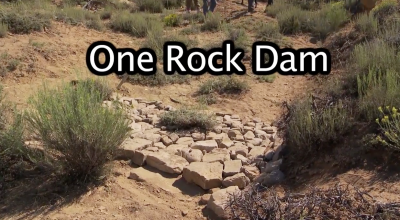An Afternoon with Van Clothier
As a hydrologist for the Arizona Department of Environmental Quality, I've had to pleasure of working with Van Clothier (Stream Dynamics) on watershed restoration activities in Southern Arizona.
In 2018, Van was hired to help in restoring a wetland on The Nature Conservancy's Canelo Hills Preserve south of Tucson. Over the years, respective water harvesting features have been revisited and improved in response to extreme weather events. Overall, the strategies are working as summarized at minute 16:00 of this video: https://youtu.be/dKXuB1V2Y2s
In December 2023, I was invited to accompany Van and other volunteers to help with headcut stabilization upstream of the Canelo Hills wetland. Van agreed to let me record installation of the resulting log vane. I'm sharing the same here for those interested in these strategies.



